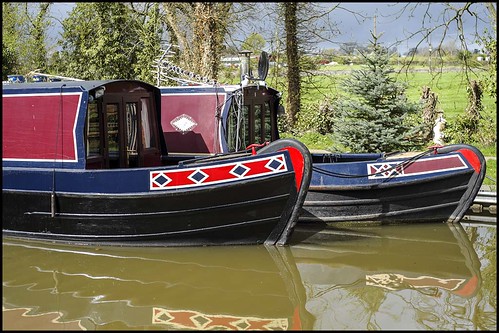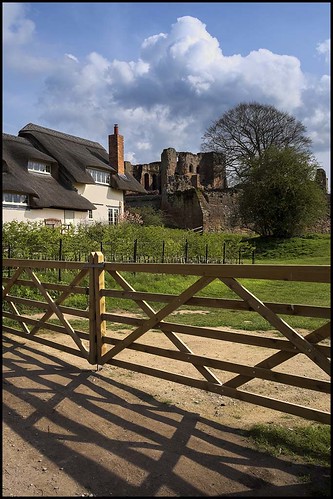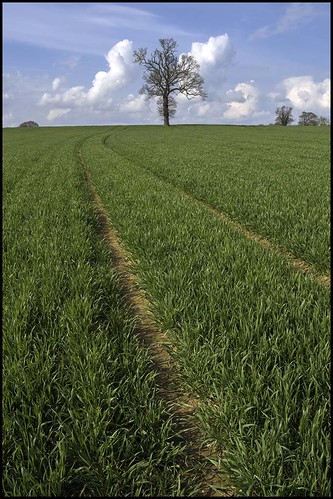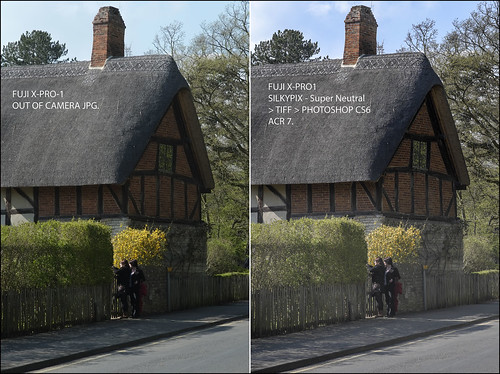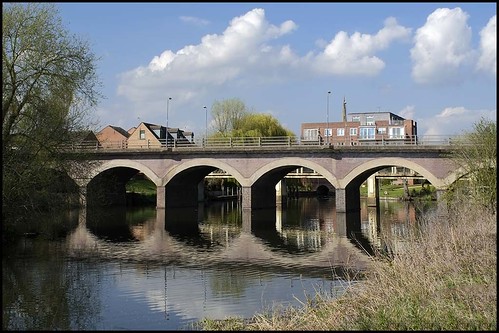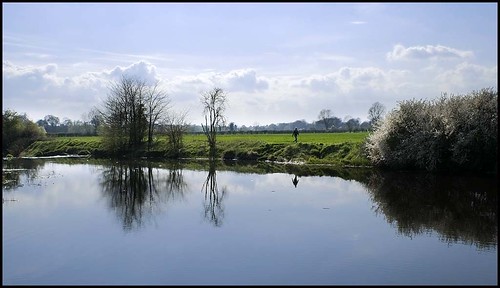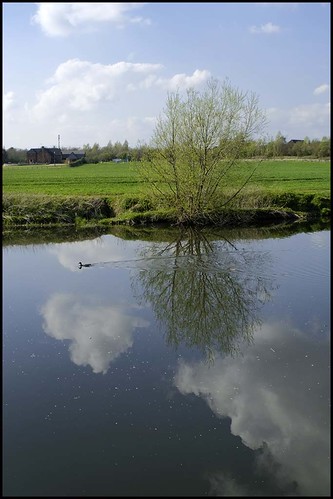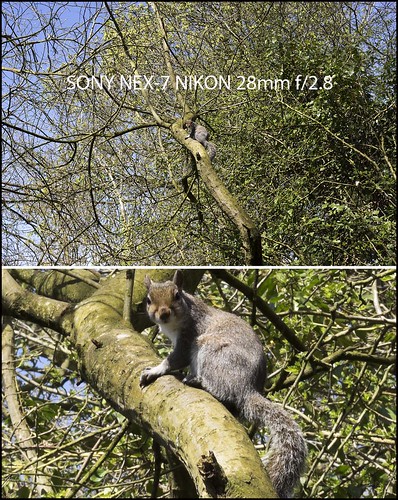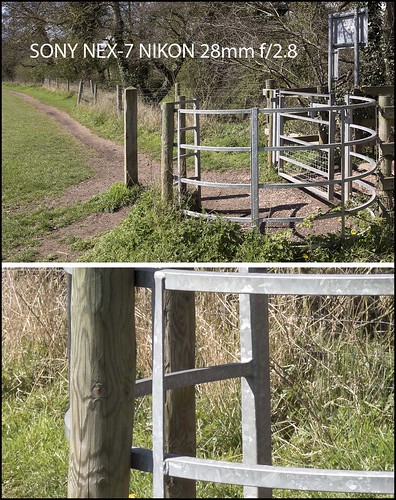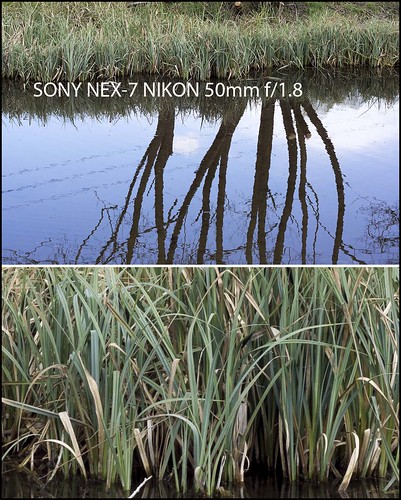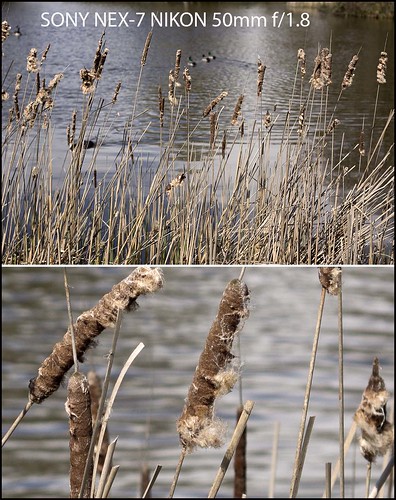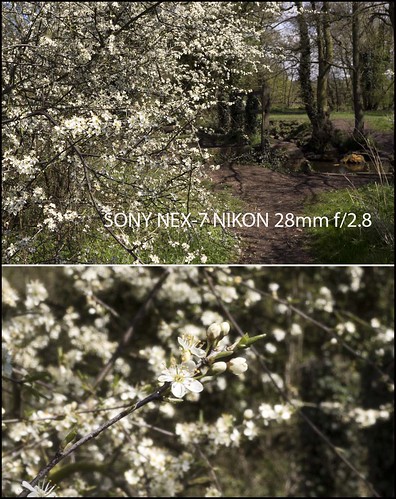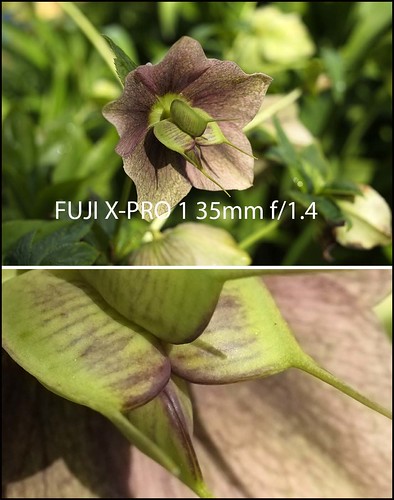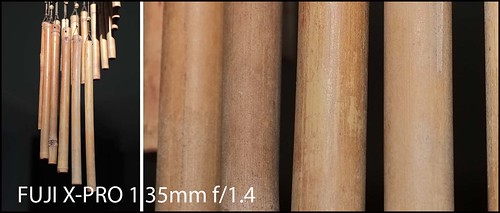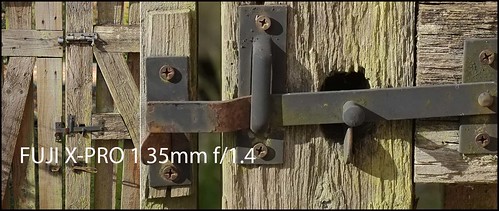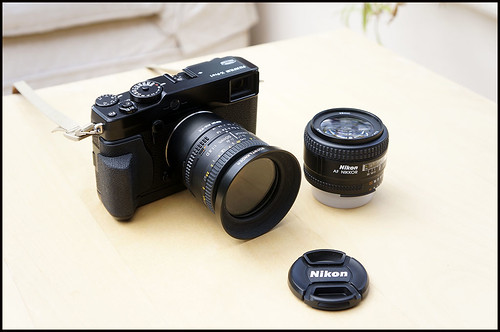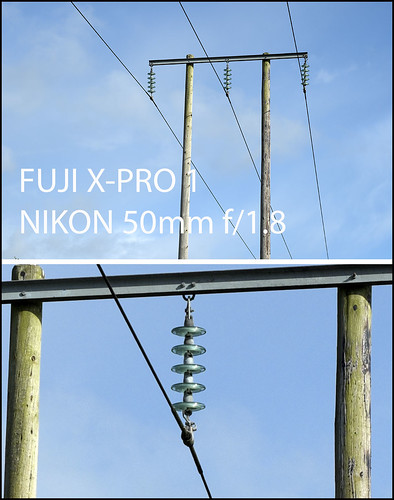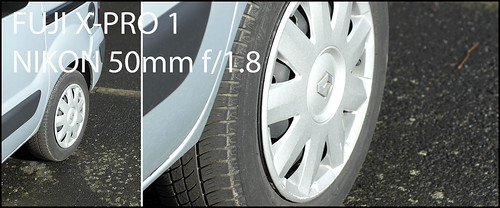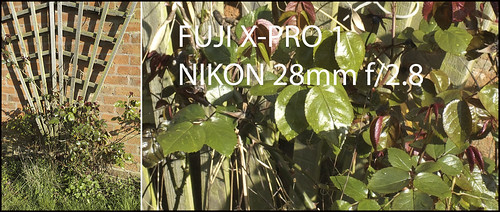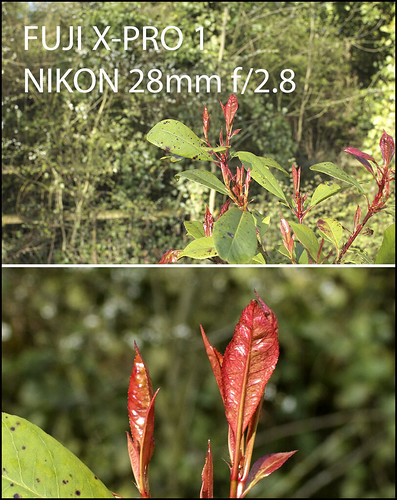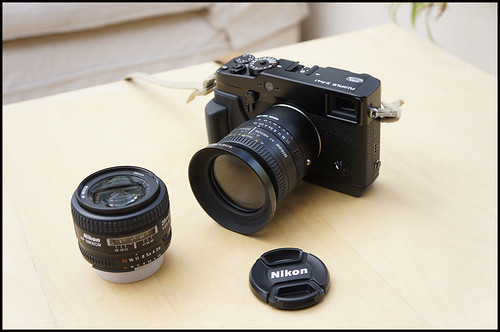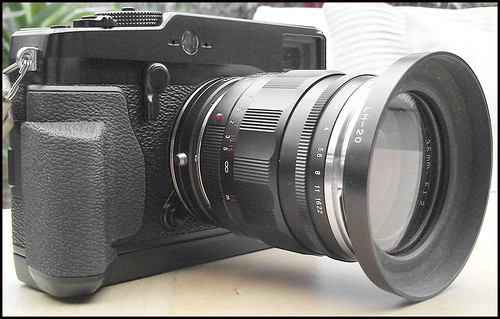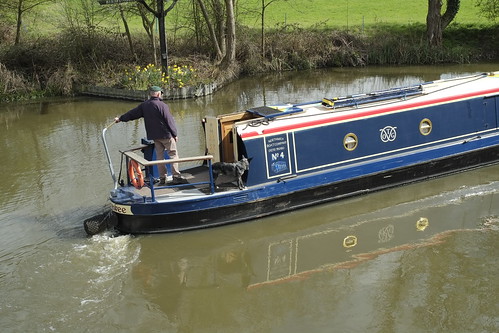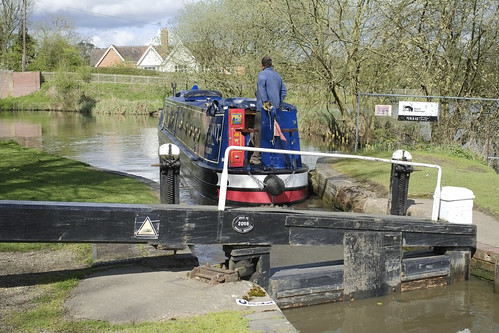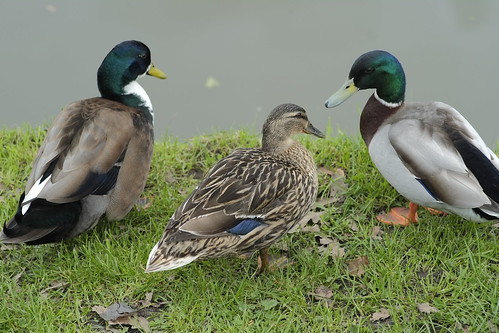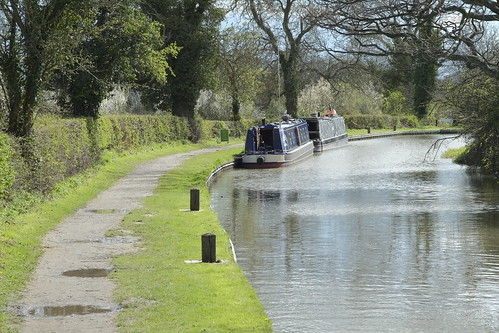Got myself a leather case for the NEX-7 from ebay, which is very nice and improves the grip on the camera plus offers some protection. Just to get some perspective on the X-PRO 1 I went out with the NEX-7 and the two Nikon primes - 28mm f/2.8 and 50mm f/1.8.
I also took a few more shots with the 35mm f/1.4 Fuji lens, since I've been using a lot of MF lenses recently.
So X-Pro 1 or Nex-7? Well I'd love to be able to take the Fuji sensor and put it in the Sony. Then I really would have my perfect camera. (Or as close as its possible to get to that at this moment in time)
I find the NEX-7 really easy to use, and its also a pleasure. This really is the nicest camera I've ever used. Its combination of small size, light weight, good functionality and handling (improved by the case), AF speed and accuracy, easy and accurate manual focusing, decent battery life and once I had it set up right, simplicity. The image quality is fine. At low ISO's its like everything else really. There's just more of it!!
The X-Pro 1 has some of the above, but in most cases, I find it less pleasurable to use than the Sony. Its small(ish), light(ish), the AF is, well what it is, the MF is OK, but not a patch on the Sony, functionality is again best described as it is what it is, it has poor battery life (though this is much improved by using the optical viewfinder only) and its not that simple.
The pictures I took with it were with the Fuji 35mm f/1.4 lens, and just to see what it was like after using the camera in MF mode for a while I turned everything on. The clicking aperture blades were back, grinding AF etc. I was doing some close ups alternating with longer shots, so I was turning the macro on, then off, then on again etc. Looking at the images later the camera had missed focus several times, despite beeping confidently at me to tell me it was locked on. So much the same as before really, and in line with what virtually every reviewer and user has said.
But then there's these pictures that come out of it.
And thats the dilemma with this camera. How much can I, and indeed any of us, put up with to achieve this superb image quality? Of course there shouldn't be this dilemma in the first place. None of us are expecting D4 handling and speed here, but some of what the X-Pro 1 does (and doesn't do) is nothing short of disgraceful. Familiarising myself with the clicking aperture blades again, I realised just how noisy they are.
I read a piece by a wedding photographer who was keen to use the camera but was concerned about the "rattlesnake effect" in practice. He made the good point that yes DSLR's can have noisy shutters, particularly when using a motordrive, but that is a noise that is both understood and at a wedding, expected. The clicking blades are an unusual sound and would attract attention because non-photographers wouldn't know what they were. Drawing attention to your camera is not a good idea. The whole point is to get people to ignore it.
The problem with this, and the fact that the screen and EVF have a slow refresh rate and the poor battery life, mean that this cameras obvious advantages in low light situations, because of the great sensor, are sabotaged by the inadequacies of the body.
This combined with the slow noisy focusing and the inexusable number of times it either won't focus at all or misfocuses, makes for a flawed camera. And yes I've said it before, but the more times this gets highlighted, the more Fuji will get the message that they really need to fix this, and fix it fast.
If I was asked whether or not I would recommend the camera, I would say yes for the image quality, but be very sure that its faults don't outweigh its advantages for you. (Actually thats probably advantage - singular!!) If you want to be unobtrusive and use AF, then that might not be possible. If you're looking for that "Cartier-Besson moment" then just cross your fingers that it doesn't mess it up.
If you want to use it as a studio, still-life or landscape camera with top quality manual focus lenses then you would get my enthusiastic endorsement. As a street photography camera, quick reaction camera or indeed even as a camera for documenting your family life, I would issue a warning. Something along the lines of, see if it gets some fixes in a firmware update or if not wait for the X-Pro 2. Or going back to the point of this post, get a NEX-7. Or if you need something that works well in low light, a NEX-5n + Viewfinder + Zeiss 24mm f/1.8 is cheaper than the X-Pro 1 body alone.
So how is it for me? Well as previously stated, I'm planning to use it as a manual focus camera virtually exclusively. I will use it when I have the time to get the best out of it. I've written before that its nothing to do with the fact that pictures with this sensor will sell more, because they won't. I just love looking at the images on my screen. In many cases they are really beautiful. I think after its been around for a while, people will stop asking questions like "Is the image quality as good as a Leica?" and start asking questions like "Does x,y, or z have as good image quality as the X-Pro1?"
I can't actually think of any other camera that produces files that look like this. And another thought has occurred to me. This is possibly the first sensor that produces images that work best in the digital domain. What I mean by this is that you would think that a digitally produced photograph would be a clean, accurate representation of what the camera and lens is pointed at. To a large extent this hasn't happened. The need for AA filters is just one example. With increases in bandwidth speed more and more full-size images are going to be viewable on computer monitors, iPads and the like. The web doesn't have to have only low-res images anymore. The X-Pro 1 sensor strikes me as ideal for producing representations of the world that get the closest to reality that two dimensions can. And while something like a Leica M9 is designed to produce a film-like appearance the Fuji X-Pro1 seems to achieve something different. Ironically it includes film-like simulation presets. Though this to me is just some marketing device to remind us of Fuji's past, since these presets may be attractive to some, but as far as I can see they have little in common with their silver halide predecessors.
One thing is for sure, this sensor does move things on. I was reading some posts on a Leica forum yesterday, and there were some taking every opportunity to criticise the Fuji. But then I guess if you have recently spent £5000 on a camera you might well try to convince others (and yourself) that this was money well spent. But there were some who were obviously both shocked and impressed by just how good these Fuji files are. Certainly any lingering idea that I might yet regret selling the M9 has disappeared ever since I've had the Fuji.
So this is pretty much the end of this "review" section in my adventures with the X-Pro 1. There will of course be lots more posts about me using it. Probably alternatively getting frustrated with it and impressed with the picture quality. I might be inclined to do a test between the Fuji and Voitlander 35mm lenses, but then I might not since from what I've seen they are both very good indeed, and it strikes me it would probably be too close to call. The Fuji is certainly better wide open and the Voitlander slightly better around f/8-f/11. However the Voigtlander has one overriding advantage. It doesn't make a noise!!
There are plenty of other reviews and experiences around and many are well worth reading. These often include the two Fuji lenses I don't own.
Chris (CMHHK) wrote a phrase a while ago at the end of his impressions of the Fuji. You can see that post here:-
"If I were only allowed one camera, it would not be an X-Pro. If I were allowed two cameras, then maybe one would be an X-Pro 1."
I can't think of a better summing up of what I think of the camera.
N.B. to see more on the cameras and lenses featured in this post click on the relevant labels (tags and keywords) below.
All original material on this blog is © SoundimageplusFor comment and discussion - join us over at Google+https://plus.google.com/104558599624253816184/postssoundimageplus website - http://web.me.com/davidmartynhughes/Site/home.html follow on twitter - http://twitter.com/#!/soundimageplusfollow on facebook - http://www.facebook.com/soundimageplussoundimageplus on flickr - http://www.flickr.com/photos/45203414@N06/soundimageplus blog readers pictures group - http://www.flickr.com/groups/1705334@N24/ soundimageplus on YouTube - http://www.youtube.com/user/soundimageplussoundimageplus on Vimeo - http://vimeo.com/user1050904/videos
